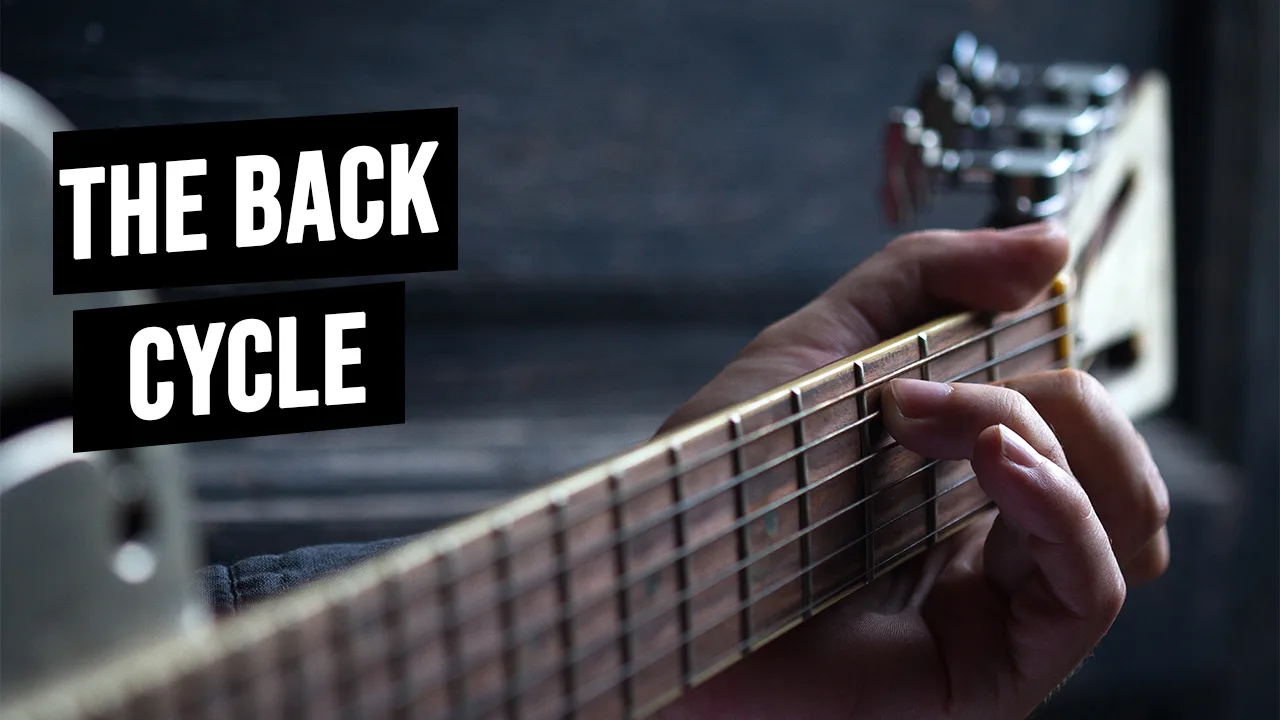
The “back cycle” is a commonly used term in jazz guitar and refers to a series of chord progressions that are used to create a sense of tension and release in jazz music. This cycle is also known as the “backdoor progression” or the “backdoor ii-V” progression.
The back cycle is often used to substitute for the traditional ii-V-I progression in jazz music, providing a more unexpected and interesting harmonic approach. The progression typically begins with a minor chord, such as a minor 7th or minor 6th, followed by a dominant 7th chord and then a major 7th chord. This creates a sense of tension and release as the dominant chord leads back to the minor chord, and the major 7th chord provides a sense of resolution.
Here is an example of a back cycle progression in the key of C major:
| Cmaj7 | % | Am7 | Ab7 | G7 | % | Fmaj7 | % |
In this example, the back cycle begins with an Am7 chord, which is the minor chord in the progression. This is followed by an Ab7 chord, which is the dominant 7th chord, and then a G7 chord, which resolves back to the Am7 chord. The progression ends with an Fmaj7 chord, which provides a sense of resolution.
One of the key features of the back cycle is the use of the Ab7 chord. This chord is often referred to as the “backdoor dominant” and is used to substitute for the V7 chord in a traditional ii-V-I progression. The Ab7 chord has a similar function to the V7 chord in that it provides a sense of tension that resolves back to the tonic chord, but it has a more unexpected and unique sound.
The back cycle can be used in a variety of musical contexts, including as a substitute for traditional ii-V-I progressions, as a way to add harmonic interest to a simple chord progression, or as a way to create a sense of tension and release in a solo or melody.
The back cycle is a commonly used harmonic approach in jazz guitar that provides a unique and interesting sound. By incorporating the back cycle into your playing, you can create a sense of tension and release that adds depth and complexity to your music.


1 responses on "What is the "back cycle" for jazz guitar?"